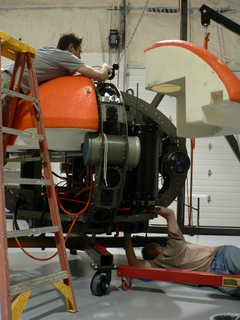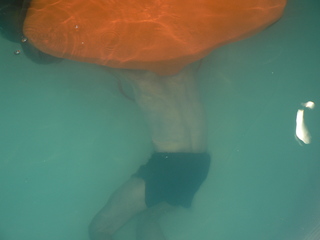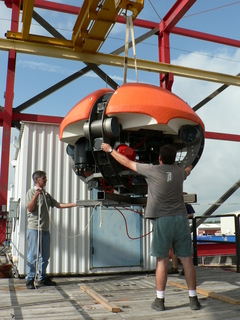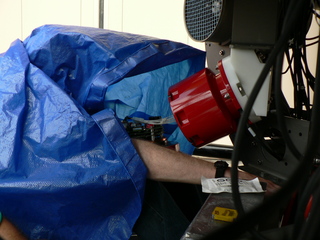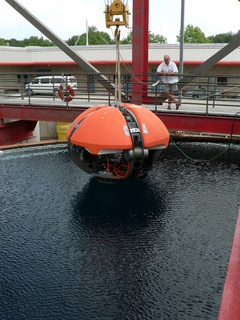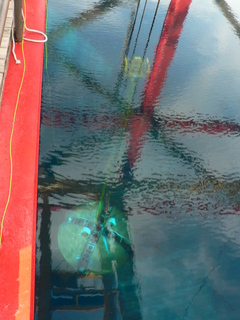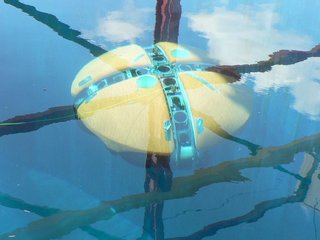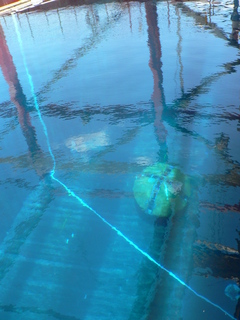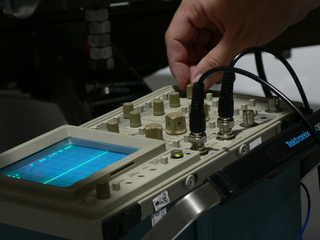

Monday and Tuesday were mostly spent debugging. The entire system had not yet been run from the batteries. Electrical problems and low level communications had to be addressed. The team split into three groups; one examined the batteries, another looked at the Doppler Velocity logger (DVL) and a third debugged the thruster controllers (MTS).
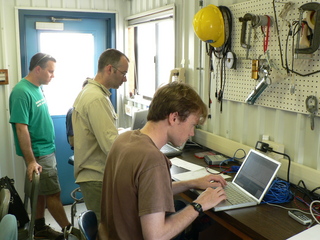
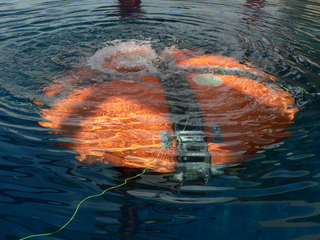
We conducted our initial system identification tests; firing each thruster and observing the vehicle's response. Thruster debugging continued into Thursday, and by the end of the day we could reliably command individual thrusters in torque mode greatly speeding up the system identification process. We also got an unexpected surprise; 2 of the thrusters had been swapped. Once that had been worked out, we started tuning the thrust mixer.



